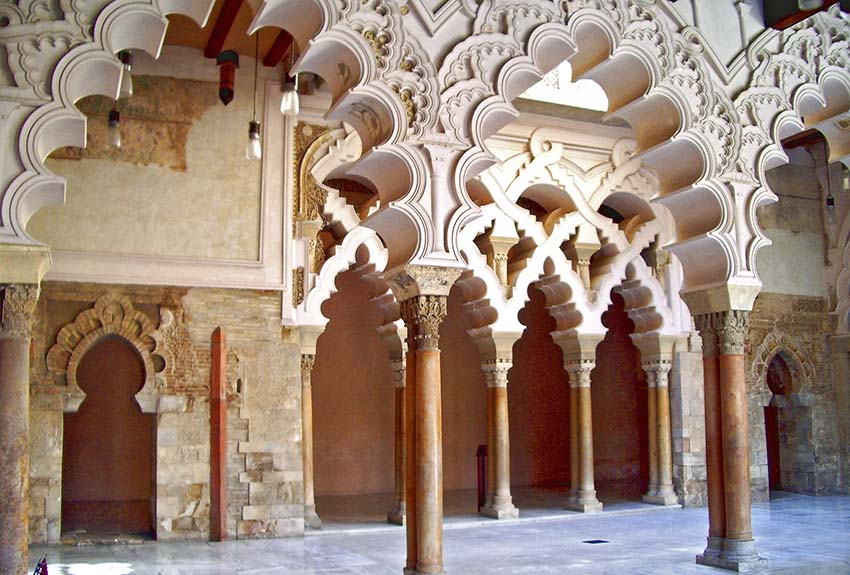Located in the northwest of Spain, half the way between the two most important cities of in the country (Madrid, the capital city, and Barcelona), Zaragoza offers a wide range of historical places to sightsee, among which the Basilica del Pilar and Palacio de la Aljafería are its most outstanding landmarks.
Even though its origins are traditionally set in the Roman period, at the dawn of Christianism, the current Basílica de Nuestra Señora del Pilar (Our Lady of the Pillar Basilique), is an amazing baroque temple, whose buliding dates back to the last third of the 17th century. The area most visited part is the eastern part of the chapel, because this is where the Holy Chapel by Ventura Rodríguez (1754) is built, which houses the venerated image of the Virgin. Around the Holy Chapel are the vaults or domes painted with frescoes by Francisco Goya: The Queen of Martyrs and Adoration of the Name of God. It was not until 1872 that the final touches were put to these vaults, when the main dome and the final spire were finished. During the Spanish Civil War of 1936–1939 three bombs were dropped on the church but none of them exploded. Two of them are still on show in the Basilica.
Close to ‘El Pilar’, there is La Seo (aragonese word for cathedral), which in fact is the cathedral of the city. It really worths walking through its door.
Another essential visit is el Palacio de la Aljafería (the Aljafería Palace) This muslim jewel is nowadays the venue of the regional parliament so walking round its walls gives the possibility not only to admire one of the most beautiful muslim architecture masterpieces, but also to know a little bit about aragonese politics and history. If a magnificent example of the Caliphate of Córdoba, its Mosque (10th century), and other one of the swan song of the Islamic culture in Al-Andalus, of the 14th century, the Alhambra of Granada, must be included in the triad of the Hispano-Muslim architecture the Aljafería of Zaragoza (11th century) like sample of the realizations of the taifa art, intermediate time of independent kingdoms previous to the arrival of the Almorávides. The Mudéjar remains of the palace of the Aljafería were declared World Heritage Site by Unesco in 2001 as part of the “Mudéjar Architecture of Aragon” ensemble.
Art and architecture are not only the only attractions in Zaragoza. Its gastronomy, which can be enjoyed having lunch or dinner in typical and well-known restaurants or having some “tapas” (small bits of different foods) around one of the most picturesque areas in the city: El Tubo.
Either on a private tour by car in one of the luxurious vehicles of tourtravelandmore.com, or on foot, led by one of our specialised guides, do not miss the opportunity to admire the most emblematic places in Zaragoza and to experience the welcoming character of its citizens which will make you feel at home.


